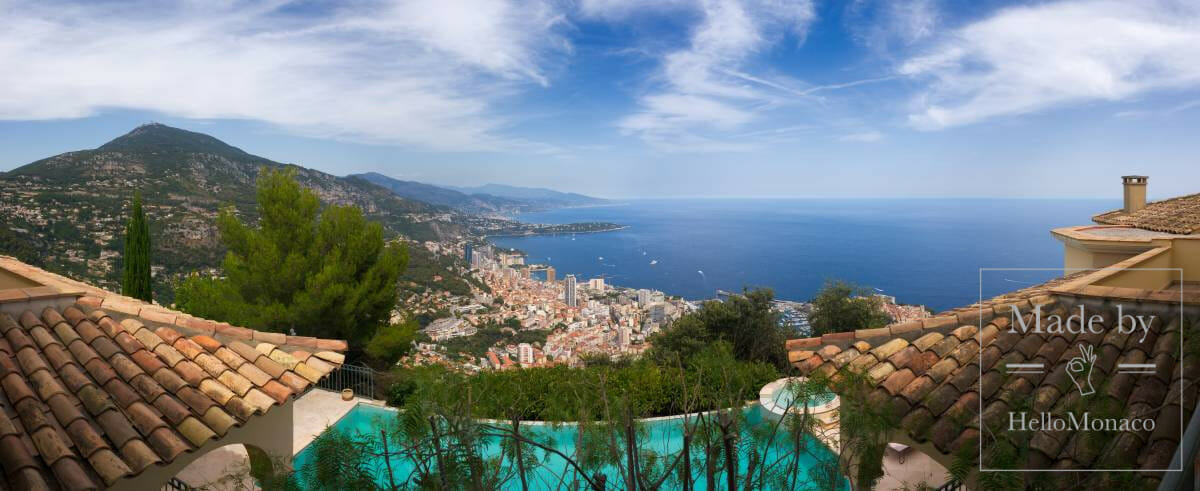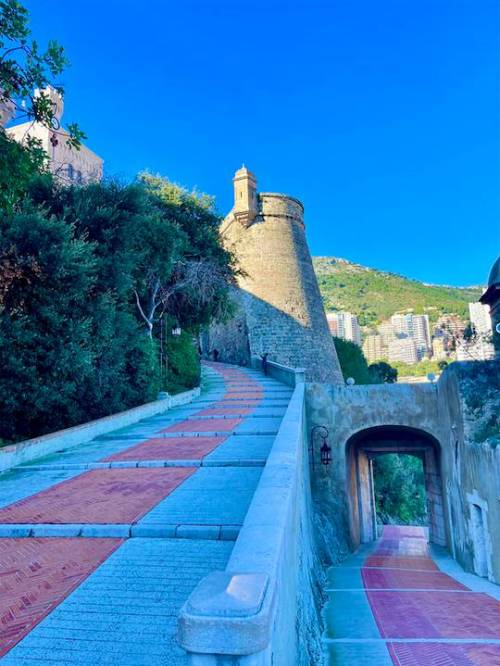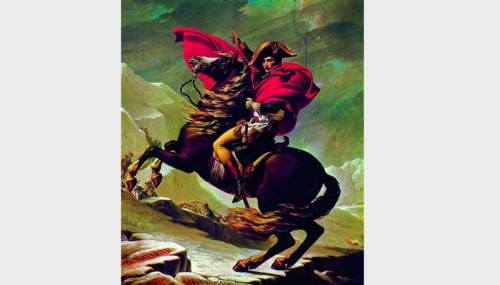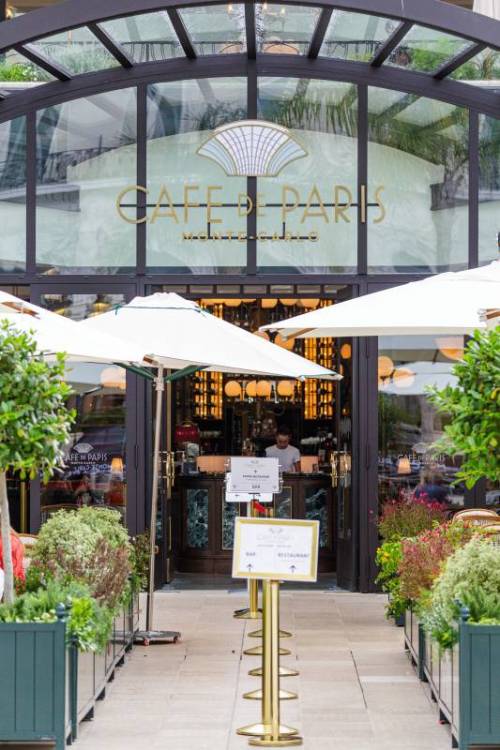From ancient times the Monaco Rocks (currently – the Monaco-Ville district, also known as La Rocher or the Rocks) and the natural port have served as the haven for the ancient tribes and the seafarers from the East. The Monoikos tribe settled down here in the sixth century, which is probably the reason why country is called Monaco now.
Throughout the period of its history the place has seen the Romans, Barbarians, and in 1215 the fortress, for which two rival clans were competing, was built where now the Prince’s Palace stands. In 1297, dressed up like a monk, Francesco Grimaldi sneaked into the fortress and opened the door to his proponents at night. To honor this event the two monks raising a sword above their heads are depicted on the family coat of arms of the dynasty of Monaco, and you can see a monument to the first of the Grimaldis dressed up like a monk in front of the Palace in the square.
The area of the Principality was gradually growing so much that at some point even the territories of Roquebrune and Menton belonged to Monaco. Can you imagine what a pity it must be to live in the street neighboring with Monaco, and think that back in the day the ancestors could have avoided joining France?!
In the middle of the nineteenth century the Principality had been hanging on the edge of bankruptcy until the Royal Family hired a unique businessman Francois Blanc. By that time he had already been known as the “magician from Homburg” for his successful management of the casino in the namesake town. The Monaco Royals agreed with him on a fifty-year concession from 1863, and he became the main shareholder of the company known today as the Monte-Carlo SBM ((Société des Bains de Mer), which still manages all the casinos, best hotels, and a few restaurants & bars of the Principality. Together with his wife Maria Blanc, they decided to build not just a casino in Monaco, but a whole special world, the world of grandeur, unknown at that time in Europe.
Thus, the casino buildings were constructed (according to the design of the Salle Garnier, the architect of the Opera building in Paris), as well as the Hotel de Paris with a planted tropical garden in front of it. He also opened Café Divan (nowadays Café de Paris). Blanc used his connections to stretch the railroad line until Monaco, and generously funded the editors of the chief European newspapers, who, for instance, described in detail the fact that one zero was taken away from the Casino Monte-Carlo roulette, which meant that the gamblers’ chances of winning increased.
Monaco became a popular vacation resort of the European elite. The Principality’s budget got considerable funds, and in 1869 the citizens of Monaco were already exempted from the income tax. By the way, from those times until nowadays, the casinos have not allowed Monegasques, nationals of the Principality, in.
In the beginning of the twentieth century Prince Albert I, a “learned duke” and a seafarer, created the Oceanographic Museum, a must-see place in the Principality nowadays, even if you dislike museums. They have a great aquarium with tropical and Mediterranean underwater creatures. In 1911 the first Monte-Carlo automobile rally was held, the Sergei Diaghilev ballet performed its show for the first time, and the first Constitution was adopted.
Prince Rainier III, heir of the crown in Monaco, married a famous 26-year-old American actress Grace Kelly, who he met during her Cannes Film Festival visit as a member of an American delegation. It was not a story about a Prince Charming and Cinderella though, because the dowry of Grace constituted two million U.S. dollars. After the wedding Princess Grace was unable to continue her cinematic career, and her movies were forbidden in the Principality. In 1982 Princess Grace died tragically in a car crash, leaving three children after herself, Princess Caroline, Stephanie, and Prince Albert II, who inherited the crown in 2005.
In 2011 Prince Albert II married Miss Charlene Wittstock, who represented South Africa at the times of her sport career at the Olympics.
Source: Direction of Tourism and Congresses of the Principality of Monaco
Photo from website www.palais.mc








